The indoor environment attracts fungus gnats and fruit flies because they have the right conditions to reproduce and survive. fungus gnats vs fruit flies Both these flies flourish and thrive in moist, affluent areas of the home. However, fungus gnats and fruit flies in homes are annoying and noisy. They also give an impression of unsanitary conditions around your houseplants and in-home.
Both fruit fly and fungus gnats have a striking resemblance, making it difficult to distinguish them. Because both flies are small and almost have similar body colors.
Despite similarities, both these flies (fruit flies and fungus gnats) are different, and it is super important to understand their differences to get rid of them effectively.
Let’s understand the difference between these two flies—fruit flies and fungus gnats so that we can get rid of them and prevent our indoor plants and noisiness.
Fungus Gnats vs. Fruit Flies: How to Identify Them?
First, understand the differences in the fruit fly and fungus gnat in their body characteristics, life cycle, host plants, and feeding habits.
First, discuss how to identify fungus gnats vs. fruit flies or these tiny flying insects:
Identification of Fungus Gnats
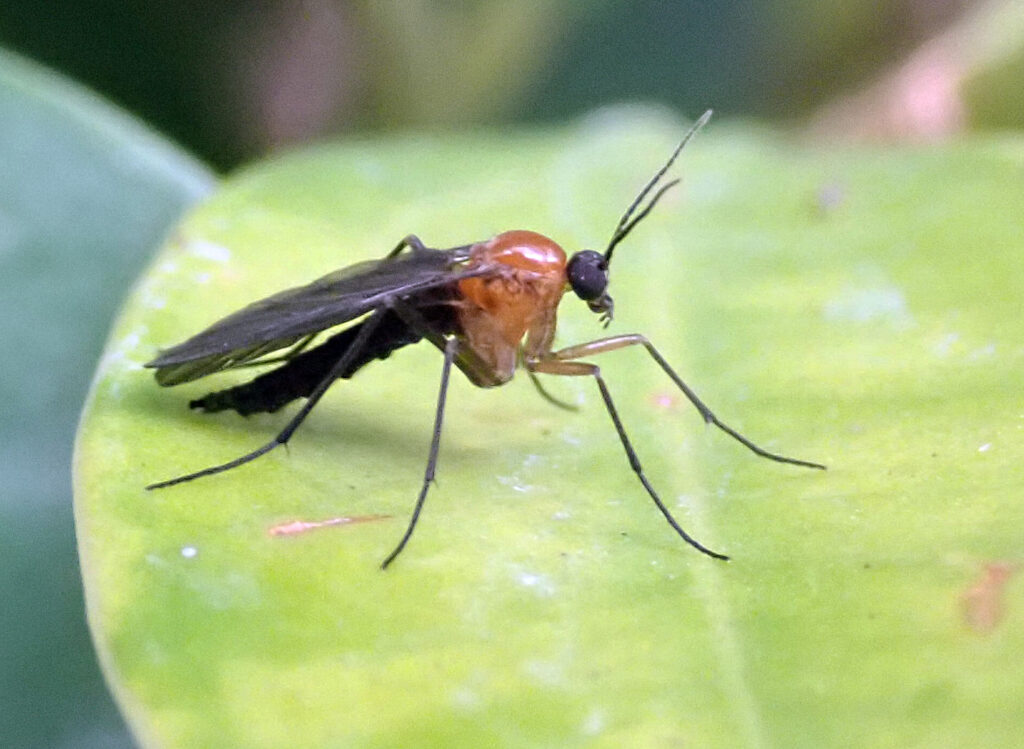
Fungus gnats are also known as dark-winged flies that infest moist soil and potted plants. They appear as dark, slender, and delicate-looking flies with long longs and segmented antennas. Unlike common houseflies, fungus gnats have dark gray to transparent wings and are not strong fliers.
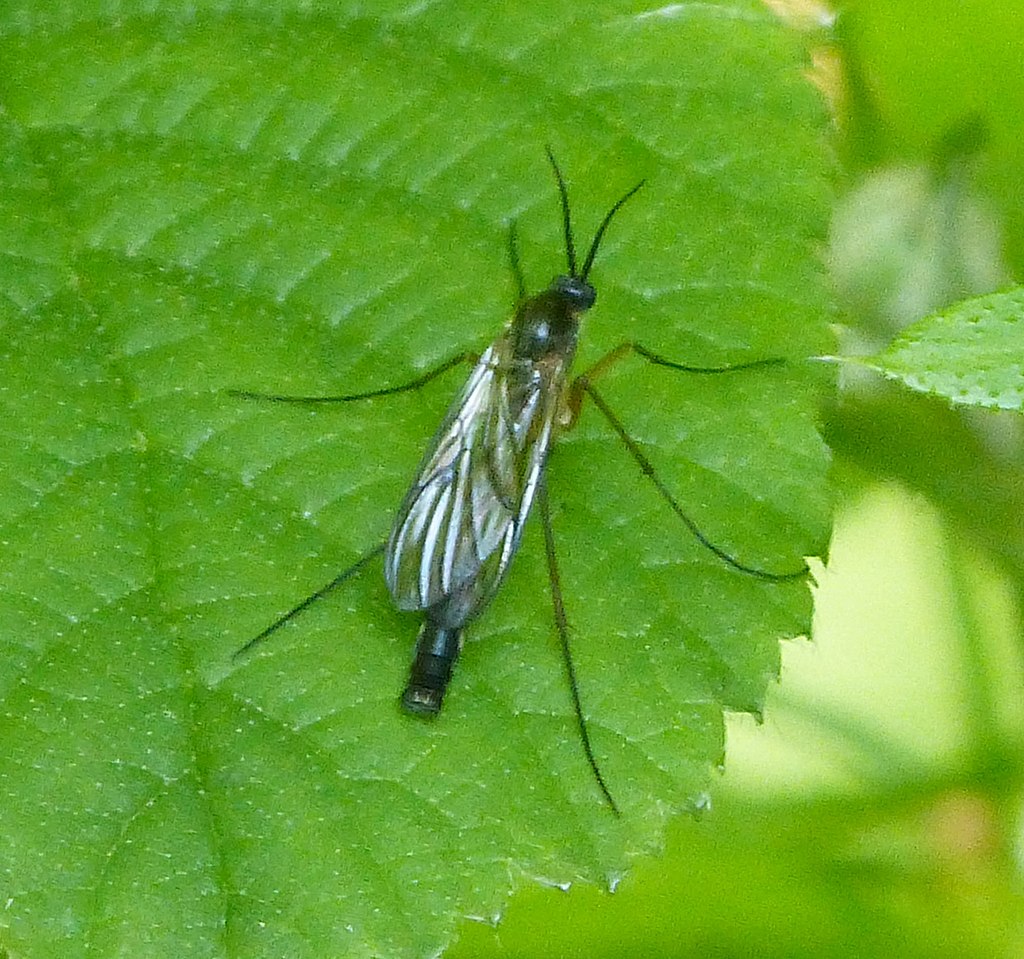
They are 1.5-3.1 mm long and attract light, moist material, and organic matter. Fungus gnat larvae are 1/4 inch long with dark blackheads and shiny pale to transparent bodies.
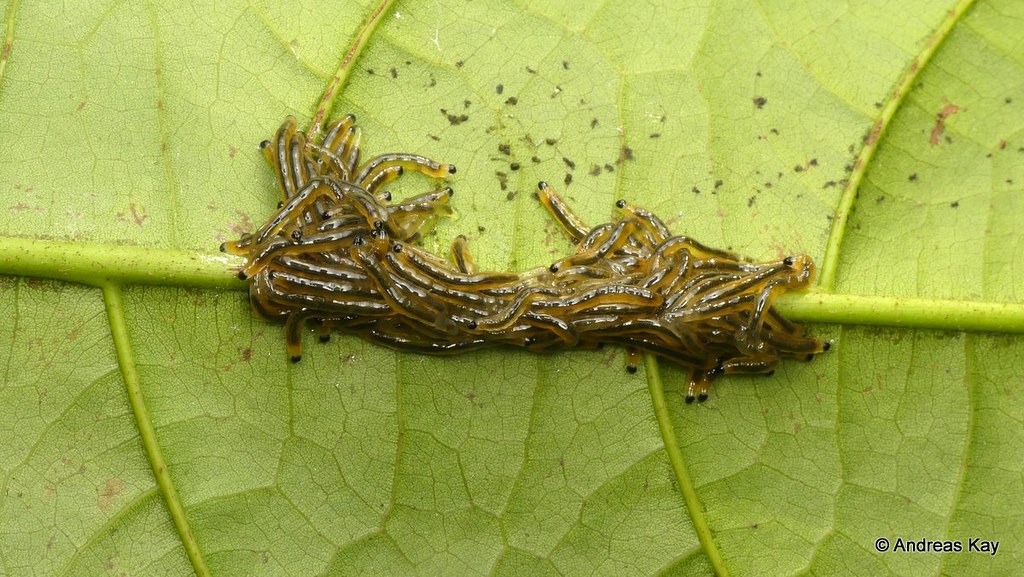
Fungus gnats belong to the family Sciaridae—most of its members are common houseplant bugs. The female gnats lay eggs in moist and plant debris-rich soils and live on potting soil or near plant roots. The fungus gnat larva leaves behind slimy trails on the soil and plant leaves just like slugs and snails.
Identification of Fruit Fly
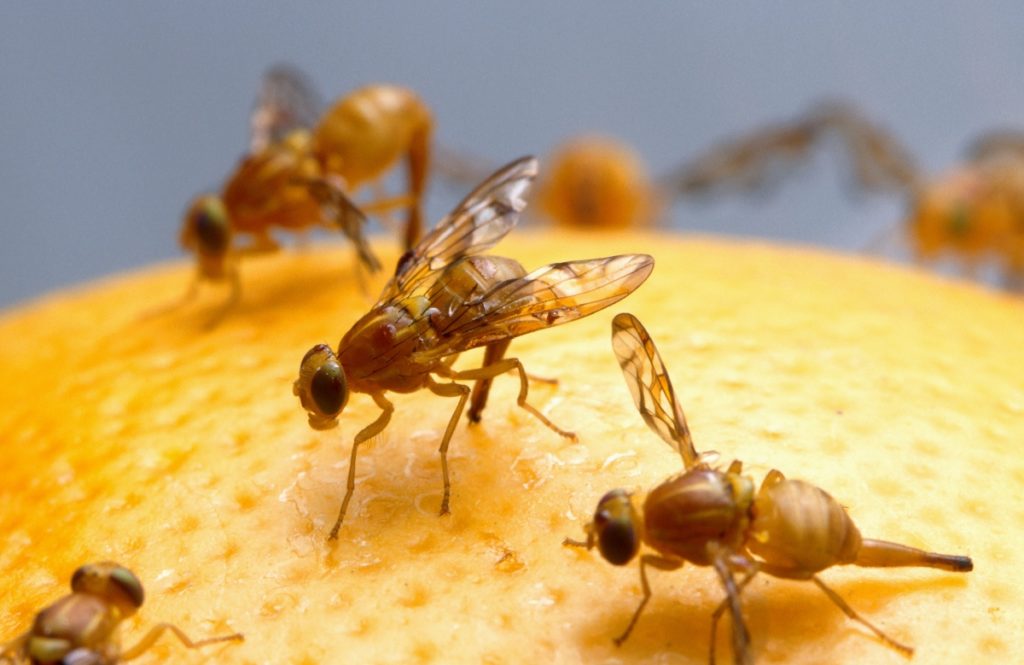
Fruit flies or red-eyed fruit flies belong to the family Drosophilidae and are the most common flying insects in homes, kitchens, restaurants, and garbage bins. Fruit flies are not only confused with fungus gnats but also with drain flies.
Fruit flies are 3 to 4 mm long with red eyes. The thorax region of fruit flies is of tan color, while the abdomen region is of black color with a gray underbelly. Overall gives an appearance of tan color with red or black color eyes.
Fruit fly infestation occurs where the food is present either fermented or rotted. Similarly, they tend to crowd fresh ripe fruits or rotten ones. So whenever you see a crow of tiny flies around your kitchen and ripe fruits, fermented food, and vegetables, it is most likely, these are fruit flies, not gnats.
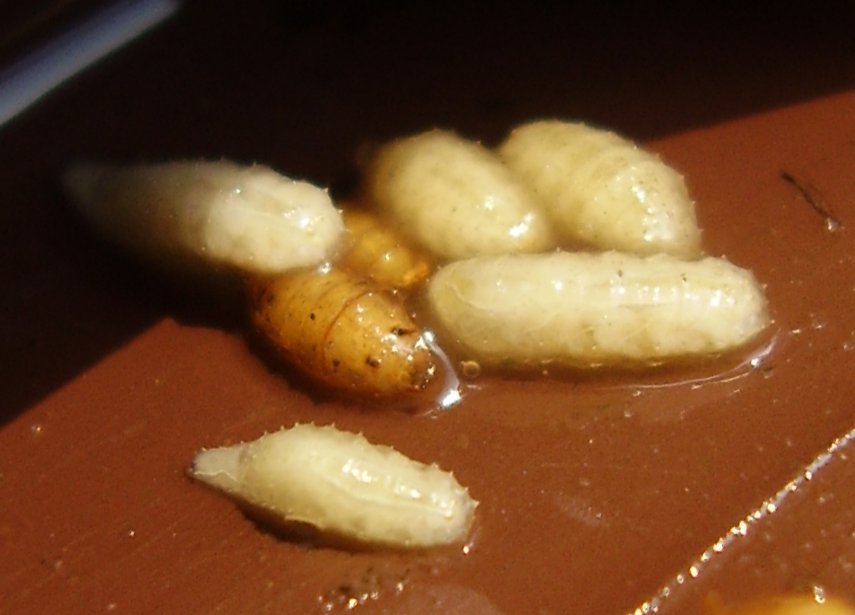
The most common home places of red or dark-eyed fruit flies are fresh and decomposing fruit, garbage disposal, rotting fruit, etc. These dark-eyed fruit fly lay their eggs on it and are not interested in indoor plants.
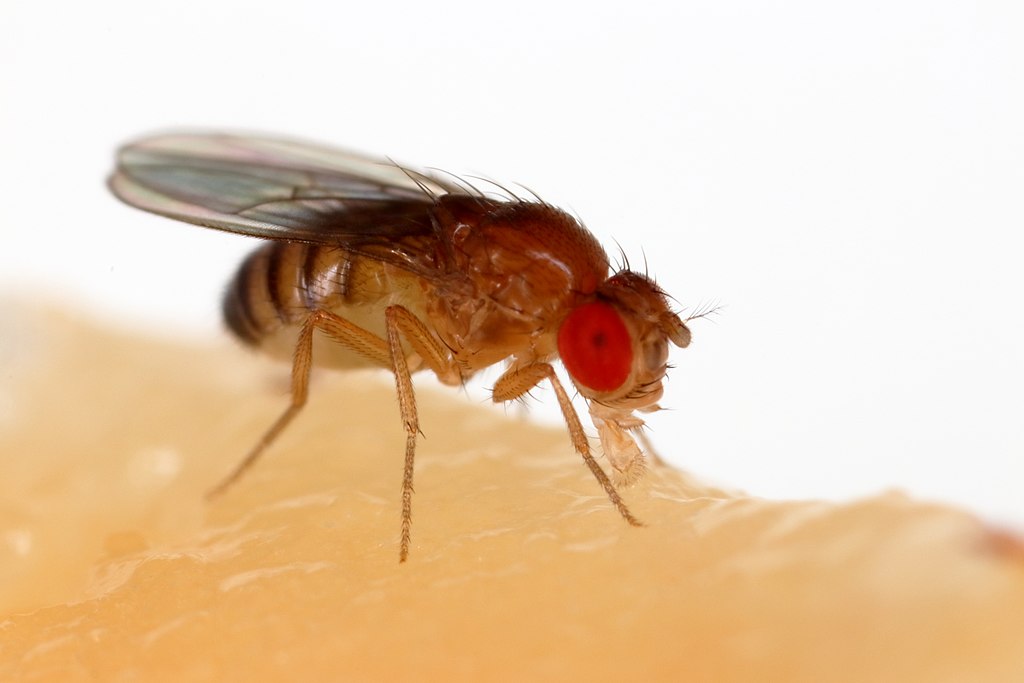
How Do I Know If I Have Gnats or Fruit Flies?
Both fruit flies and fungus gnats invade the homes for different food preferences. So to identify them is pretty straightforward.
Fungus gnats fly in groups near light sources such as windows, while the fruit flies reside near the kitchen or places with food.
Fruit flies only gather in groups when there is fresh or rotten food in the kitchen or the garbage disposal. At the same time, the gnats fly in groups and prefer potting plants and their soil as food.
Note: For quick identification of fungus gnats vs. fruit flies, simply place the bowl of fruit on a table or kitchen counter. If flies suddenly gather around the fruit bowl, these tiny pests are fruit flies, not fungus gnats.
Fungus Gnats vs. Fruit Flies: Life Cycle
Fungus gnats lay their eggs in potting soil, moist soil, or under plant debris near houseplants. After hatching, the fungus gnat larvae start feeding on plant roots and make their way up. The food sources of fungus gnats are organic material, plant roots, and soil fungi.
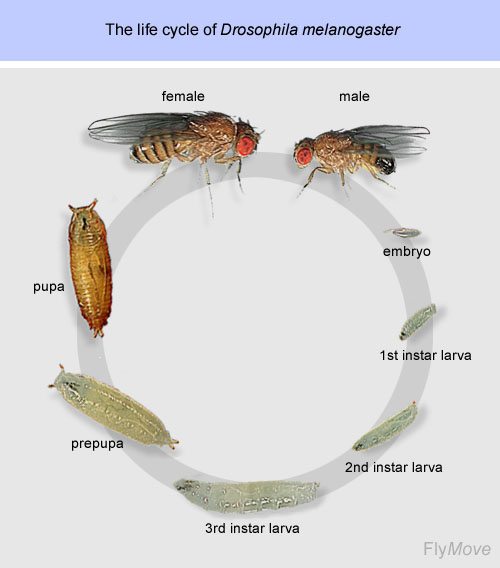
Fruit flies lay their eggs on ripe and rotten fruits, garbage disposal. They lay up to 500 eggs in each cycle, and each process completes in one week in summer and early fall.
RELATED: Fungus Gnats: What Are the Best Management Practices for Them on Houseplants?
Fungus Gnats vs. Fruit Flies: How to Get Rid of Them?
Following methods provide the best protection from fruit flies and gnats:
Fruit Fly Traps
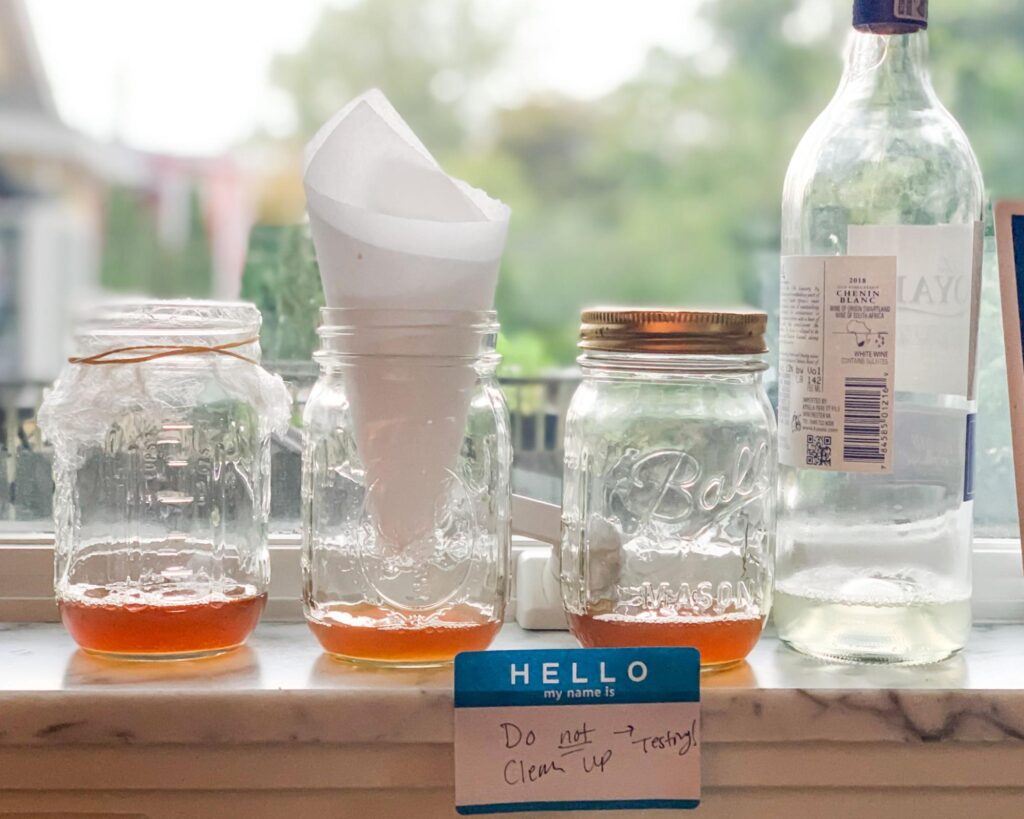
Fruit flies and gnats are both attracted to the smell of apple cider vinegar. So this apple cider vinegar trap effectively controls the populations of fruit flies.
To construct a fruit fly trap, take a paper funnel, apple cider vinegar, and jar. Fill the pot with vinegar as bait for fruit flies and place the rolled paper into the jar. Place the jar on kitchen counters near fresh vegetables and fruits. Fruit flies will attract the vinegar, climb the hole to get vinegar, and not return. However, this trap is more effective in controlling whiteflies but not fungus gnats.
Control Fungus Gnats with Neem Oil Spray
The vinegar trap is not effective in the management of fungus gnats. So to get rid of them, neem oil spray is the best option. Otherwise, the houseplant owners will compromise their healthy plants.
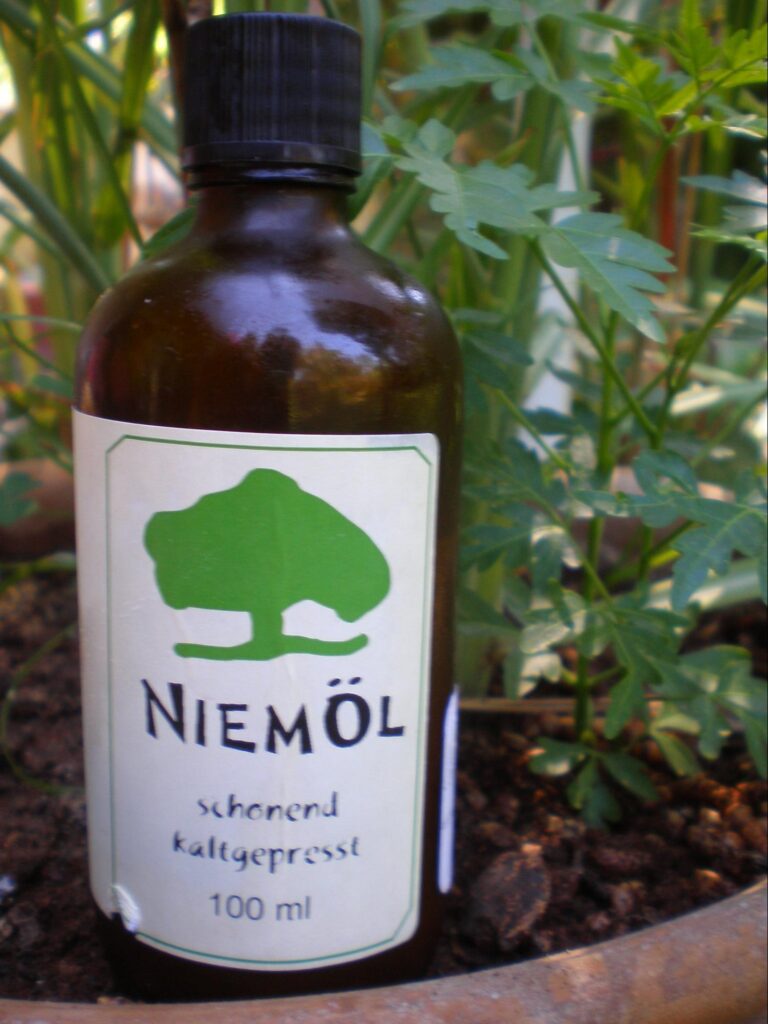
To make a neem oil spray, mix one tablespoon of a mild soap per gallon of water and add two tablespoons of neem oil. Shake this mixture well and spray it on the plant thoroughly to kill adults and larvae of fungus gnats.
The neem oil spray will not allow fungus gnats to reproduce and kill them instantly by suffocating them.
Frequently Asked Questions
What Kills Fungus Gnats on Contact?
The contact insecticides such as neem oil kill the gnats. These chemicals stop the feeding activity of fungus gnats and kill them by starving.
What is the Difference Between Gnats, Fruit Flies and Drain Flies?
Both fruit and drain flies tend to roam around the kitchen and food. Also, they look very similar, and it is difficult to distinguish between them. However, the drain flies are primarily present in the drain on fermenting food. They have broad wings, unlike fruit flies which have slender wings. Drain flies have the appearance of moths.
On the other hand, the fungus gnats are dark brown or black body-colored pests that prefer moist and nutrient-rich soil. They also eat plant roots and fungi. They have large antennas bigger than their head. The wing of gnats is tan or clear with large legs, just like mosquitoes.
Fruit flies fly around the kitchen and gather near the fresh bowl of fruits, juices, and rotting vegetables and fruits. At the same time, the fungus gnats gather near windows (because they are attracted to light) and houseplants.
Why Do I Keep Getting Fruit Flies in My Bathroom?
Because the bathrooms have moisture that fruit flies love, a bathroom drain is moist and full of organic waste, providing a suitable place to feed and reproduce. Fruit fly lay dozens of eggs while staying in a drain.
Sources for Further Reading
- Fruit Flies | Entomology. (n.d.). Entomology at the University of Kentucky. Retrieved February 25, 2022, from https://entomology.ca.uky.edu/ef621
- Smith, A. (2019, June 24). Gnats vs. fruit flies: what’s the difference? Ehrlich. Retrieved February 25, 2022, from https://www.jcehrlich.com/blog/gnats-vs-fruit-flies/
- H, B. (2020, September 28). How Do I Know If It Is Fungus Gnats In My Aiken Home. Aikenpest.Com. Retrieved February 25, 2022, from https://www.aikenpest.com/how-do-i-know-if-it-is-fungus-gnats-in-my-aiken-home
Now that you know about fungus gnats vs fruit flies, read our other tips on how to deal with plant bugs:
How to Kill Whiteflies on Houseplants? Plus Organic & Inorganic Methods
Common Types of Houseplant Bugs: Who They are & How to Get Rid of Them?







